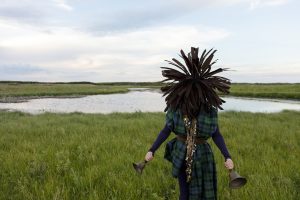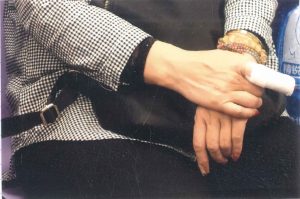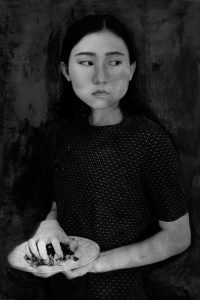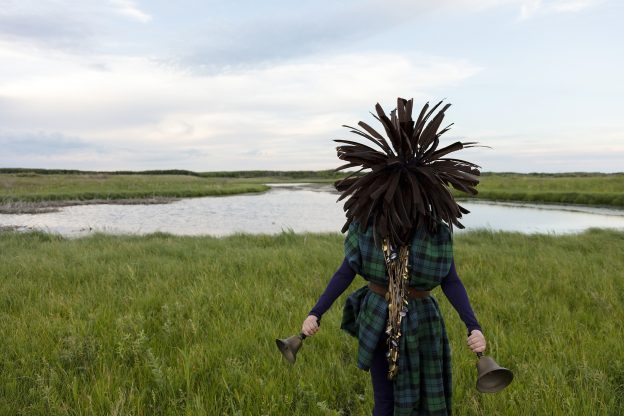
with photographs from AS IMMENSE AS THE SKY
by MERYL McMASTER
Acrylic: Man-made cellulose, acetate fabric or yarn created in Germany in 1869. Ever since then, this material has inundated clothing stores in all its forms, whether as lingerie, blouses, dresses, knitwear. If seen from a distance, one might confuse it for silk. A highly flammable material; not long ago, a sweatshop in Bangladesh producing cheap acrylic sweaters went off in flames.
Animal Prints: Fabric with patterns and colors imitating the skins of animals has been made into blouses, panties, t-shirts, and trousers, not to mention pillowcases and bed sheets. This particular pattern is for those who want to get wild in the commonplace domestic surroundings of their homes, or also for those who do not have the heart to don furs and have most likely retained all their pubic hair.
Blanket: A blanket is a piece of soft cloth large enough either to cover or to enfold a great portion of the sleeper’s body. A young, grieving seamstress who suddenly lost her husband to a heart attack while he was riding his bicycle to work, took all his old clothes—shirts, trousers, jackets—and stitched for herself a blanket to keep warm at night.
Body: A mortal vessel. The phenomenon of fashion presupposes that we all must bear bodies. At times, it may even be difficult to separate body from cloth, for the survival of fashion rests on the fact that there is a body that someday will die.
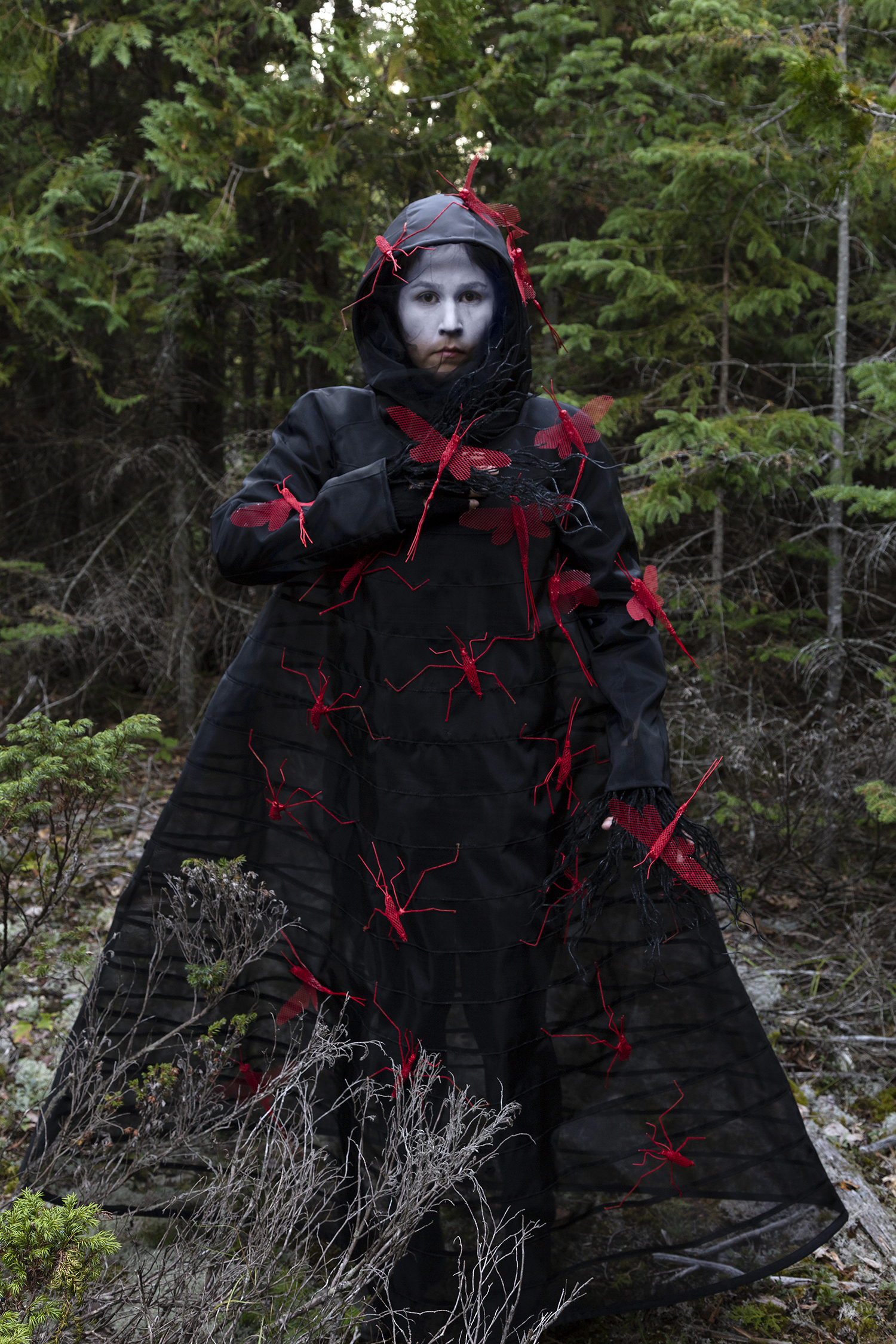
Buttons: Originally merely decorative, buttons have, over time, become functional, mere means of opening and closing garments, akin to zips and other fasteners. As a result of which, buttons function like the edges of the body—the lips, the enclosure of the teeth, the rim of the anus, an opening, a mouth. The decline of the button as a sign of high ornament has made these sartorial trinkets appear from afar, as moth-eaten or charred holes.
Cuffs: A fold or band serving as a trimming or finish for the bottom of a sleeve. Initially, like the collars of a shirt, cuffs were detachable. Now, attached, they appear as beautiful remains on our shirts.
An undiscovered artist of the late 19th century, Boris Nevsky, used to vigorously wash his cuffs every evening, and, when there was not enough water, used to make his cuffs, himself, out of chart paper.
Cut: Cutting cloth, apart from being an indispensable tenet of modern tailored clothing, was once perceived in India as an act of violence done upon cloth; I have known of tailors who, before cutting, wrap their scissors with yarn to spare themselves the sound of separation. Most traditional ancient garb worn in India was never cut to symbolise totality and oneness, but perhaps also as an act of non-violence. Kriah, the Hebrew word for “tearing,” is a Jewish mourning ritual that involves the tearing of cloth upon hearing news of the departure of a loved one.
Dead Clothes: The fashion cycle can be compared to ancient agricultural festivities that marked the change of season, festivities of death and renewal, so much so that every new garment, once worn, already begins to die. This explains why old fashions resurface. I may occasionally don a shirt reminiscent of a bygone trend, but not without the necessary magic-ritual to bring the shirt back to life. At times, it may involve dipping the garment vigorously at the banks of a river or merely the performance of a ceremony akin to what a newborn baby might receive. In some rare cases, the passing of time itself revives the long-dead garment. Typically it is forbidden to remove from your cupboard a shirt you wore in high school and put it on without this necessary ritual, without which the dead clothing must be discarded.
Duffel Bag: A sturdy, cylindrical, canvas bag originally used by servicemen for carrying kit. This canvas is often black and therefore can resemble body bags. Ideal for disappearing acts, when depressed or lonely I have often imagined crawling into one myself. I used to keep all my clothes in such a bag along with other miscellany—even pages of this very dictionary—until one day I accidentally left it in a bus. Inside one of the pockets of the jeans—or perhaps a paper cut-out of this garment—was a chit of paper with my father’s number. The bus authorities summoned my father to pick it up, fearing there might be something dangerous and sad inside. My father, along with the policeman, inspected my loose underwear and even read through some pages of this dictionary by sifting through my clothes.
Extra-terrestrial Vestments: To imagine beings from other planets as a clothes-wearing species compels us to interrogate our own predicament. Why is it that we are the only ones who dress? Are we alone in the universe in this respect? For it is not merely protecting ourselves from the elements that drives us to wear cloth, but rather the simultaneous desire to hide and reveal, to veil our genitalia and erogenous spaces as a means to excite. Imagining the sartorial preference of beings from other planets or stars is perhaps akin to the many fashion prognoses made of the future: e-dresses, abandoning fabric altogether, clothing in a spray can. What if, however, these alien beings were smaller than ants, wearing microscopic leather jackets.
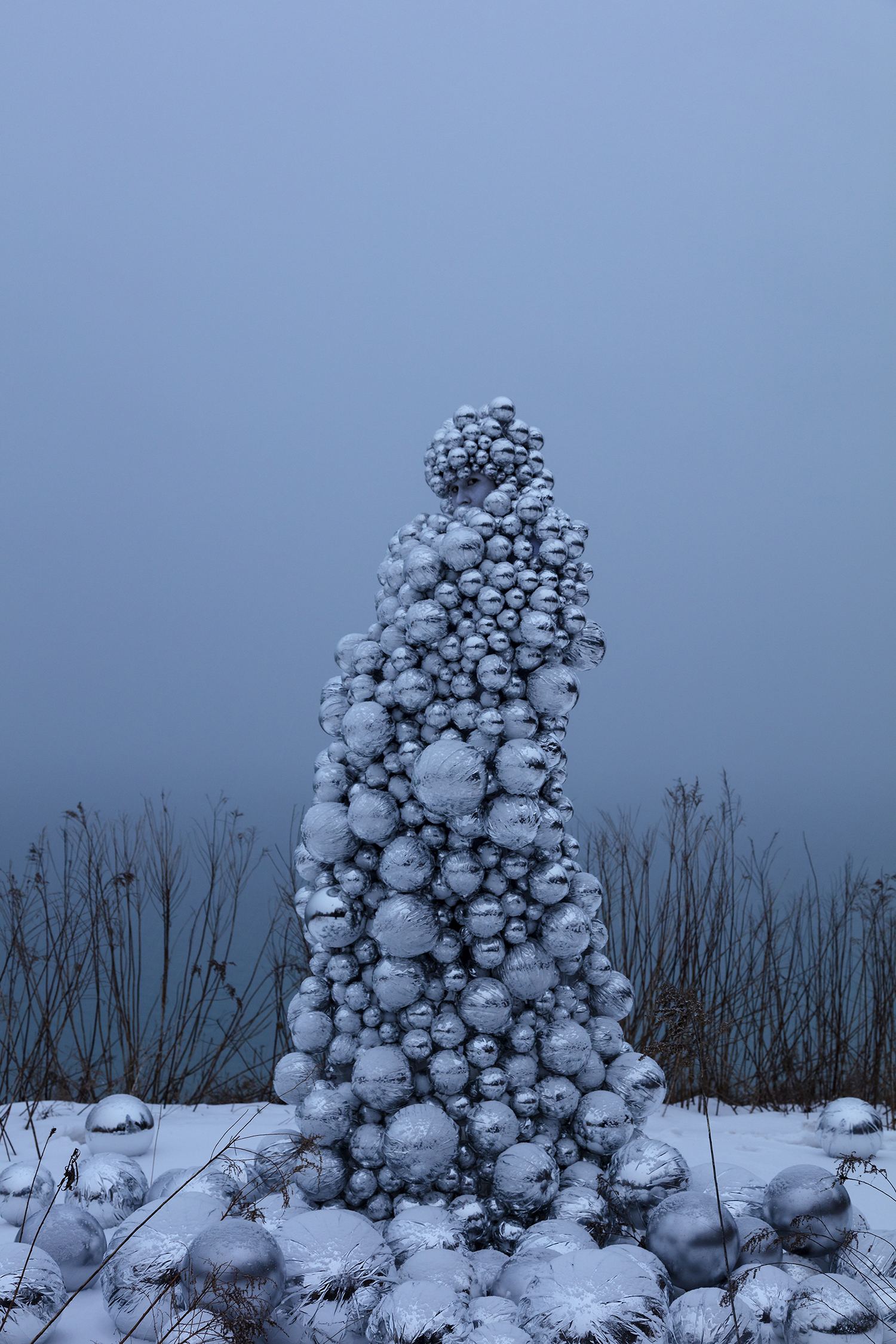
Fold: It is the fold that allows for clothes to bear any true relationship with those who wear them; clothes unfold upon us, fold upon fold, like our very own skin, the pleats of matter; man’s labyrinthine disposition can perhaps be attributed to the fold; for is not a labyrinth that which not only is constituted by many folds but can be folded in many ways?
Found Clothes: These articles of clothing are often left behind accidentally. Sometimes the owner never returns to retrieve her left-behind garment or, at times, it gets easily picked up by someone else who often makes this found article of clothing her favorite thing to wear and can be seen gallivanting through the streets of the city in someone else’s clothes. The attachment that ensues becomes so pronounced that she dreads the day when she accidentally might leave behind this jacket in some bus stop or train station.
Finishing School: Young girls spend often a year or even two learning rules of etiquette, a special emphasis put on how to dress. Often these girls arrive here at first completely unkempt, not even knowing how to sit while wearing a skirt without looking awkward. These girls often arrive here chirpy, full of life and in their clothes they sometimes look like slim, effeminate boys, a boyhood Robin Hood or Peter Pan. By the end of their stay, they leave as ladies who know how to paint their lashes and nails but often have become cold, calculating, and finished.
Frill: A ruffled, gathered, or pleated border or projection, such as a fabric edge used to trim clothing. A kind of flourish, frills may refer to a seemingly superfluous and superficial luxury, but it is what is most important, for we are essentially cosmetic beings. Even our deepest psychological trauma surfaces on the fabric of our clothes, like acne on skin. Even those who endorse nudity have no choice but to designate frills to particular parts of our bodies: hairy arms in an otherwise hairless habitat, a zit, birthmark, an armpit bush, long lashes, thin pencil-like lips.
House: There was not much difference between the house and the dresses she lived in, both did not specify gender. In fact, though the house bore a masculine title—who would conceive of that, of not first thinking of being born of a mother, comfortable as in a womb—her house looked not much different than most of the dresses she wore. In fact, breast-like protrusions made of tender clay bricks extended into the soft air.
Man-about-town: A man-about-town is usually impeccably adorned with ornament—for him the city is one large design, and he himself believes that he is a part of it, like a character in a painting—and because he does not have much work and does not like to waste his day in an office in front of a computer, he wanders about town, sometimes completing errands on his walks. Different from the mere flaneur, the anonymous man lost amongst the crowd, the man-about-town knows almost everyone in the city, comprising millions. That is his life and ambition—to know everyone, down to their names, to encompass the entire population of the city where he lives.
Patchwork: Needlework in which small pieces of cloth in different designs, colors, or textures are sewn together, much like the pages of this dictionary, a patchwork habitat woven together to emanate the appearance of both originality and novelty, though it is largely composed of stolen or often even missing parts.
Pandemic-wear: It is tempting to spend the long pandemic days indoors in washed-out t-shirts with toothpaste stains and old dying track pants. Often, one may even end up wrapping oneself in sheets or merely spending the long days that bleed into one another in just one’s underwear.
Knowing that this pandemic may last indefinitely, I asked my tailor to stitch smart, handsome Pathan Suits in different hues. Wearing jeans and other tight-fitted, snug clothing around the house is much too uncomfortable—I doubt I will even return to them once this pandemic ends. Pandemic-wear must comprise of long flowing garments, phirans, kaftans, togas, saris, gowns—fashions of the past resurface in times of such crisis. For during these long, lock-down days committed to the confines of one’s home, one can merely pretend to play the flaneur inside a cage.
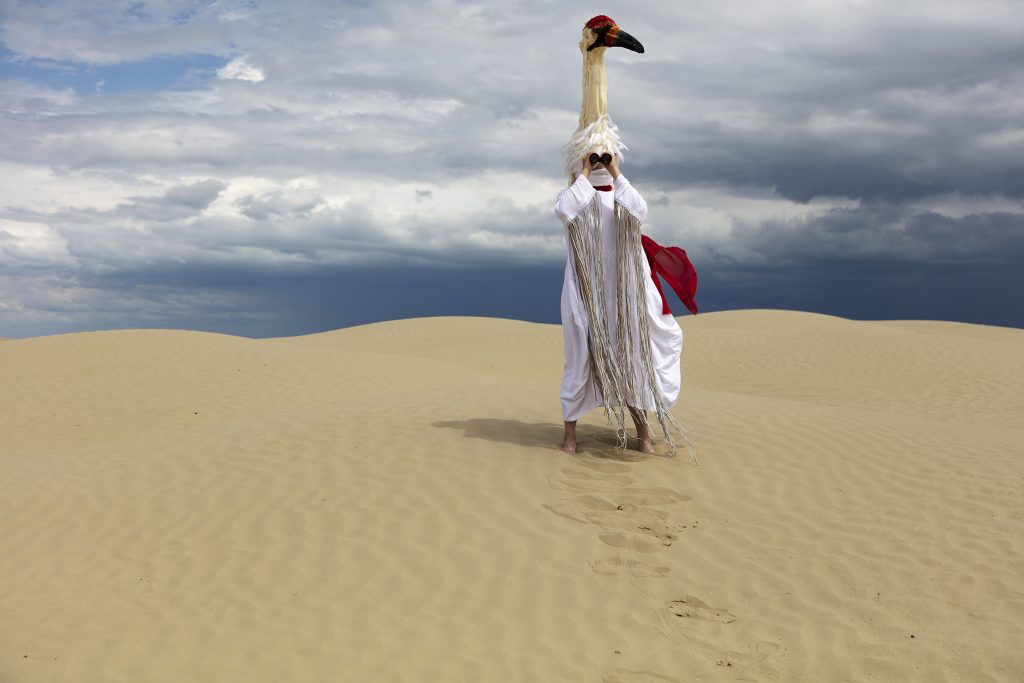
Scarf: A piece of fabric worn around the neck or head for warmth, sun protection, cleanliness, fashion, or religious reasons or used to show the support for a sports club or team. A scarf can be made in a variety of different materials such as wool, linen, silk, or cotton. On September 14, 1927, the dancer Isadora Duncan chokes to death in Nice, France, when the enormous silk scarf she is wearing gets tangled in the rear hubcaps of her open car. To this, adds the writer Gertrude Stein, “Affectations can be dangerous.”
Shawl: A piece of fabric worn largely by women over the shoulders or head or wrapped around a body. My mother and her sisters have exchanged shawls ever since they were young women. In fact, there has been a veritable traffic of shawls in the family, something their mother set in motion. She worked closely with shawl weavers and even documented their travels. She travelled across borders of nations with these shawls, almost like a shawl tradesman, herself.
In my mother’s wardrobe, there are always extra shawls, some that have never been worn that can be used either as gifts or are, not infrequently, sold. In some instances one of the sisters runs away with the other’s shawl and after years of reminding her, the former resigns herself to losing that shawl. Such are the realities these sisters have come to terms with—shawls irrevocably lost forever and life goes on. As a child, I watched our home and the homes of my aunts’ covered with shawls; they were invariably several lying nonchalantly on the mildly ornate covers of their beds. These shawls were worn by mother and her sisters who slowly began to wrap themselves completely, concealing not only their slim, starved bodies, but also their secrets.
Trap: Though not often associated primarily with clothing, clothes can often serve as traps. My wife surprised me, wearing a dress that was designed by a woman whom I once loved. At night, right before taking it off, she realized that it was too tight, that around the breasts, there was no zip or method of loosening in order to pull the dress up. I told her it was some kind of (karmic) trap. My wife looked good in this dress. She would have to either sleep in it until we found another solution, or she would need to keep it on until she lost enough weight for her breasts to shrink.
Vair: Fur, typically bluish-gray, obtained from a variety of squirrel, used in the 13th and 14th centuries as a trimming or lining for garments, but more importantly the material used to make the inner sole of Cinderella’s lost shoe, for were it really made of glass, her soft feet would have never been able to remember whether the shoe truly belonged to her.
Wardrobe: Ideally wooden. It houses our cloth, much like how our clothes house us. Wardrobes are often like secrets when closed. As a child, I used to tear open the doors to rummage through my parents’ wardrobe, imagining that I would learn about them in this manner. Not only would I look at their clothes, I also remember caressing the fabric of my father’s shirts and smelling the wool of my mother’s shawls. Sheryl, a friend who has already been referenced in the fashion dictionary, spends her evening hours meticulously lining up her white and black t-shirts and positions them carefully in her wardrobe, while Erika Kohut, the Klavierspielerin, is forbidden by her mother to wear all her lovely dresses that colorfully populate her wardrobe. As a direct result, she will try and wear these clothes to exercise her perverse fancies with one of her young pupils but will be sorely rejected.
Warp and Weft: Woven textile or even woven text. A woven text comprises at least two layers that at times resemble a single layer; the thread of the second, more hidden layer surfaces in the outer layer and vice versa. Unlike many other garments whose outer layer is opaque and non-porous –the inner layer remains always close to us, snug, almost as close as skin and never to be seen outside –woven textiles are fluid, where at all times whilst wearing garments constructed in this fashion, we are wearing our insides out and our outsides in, like an open secret.
“The way we experience the passing of time shapes our relationship to and understanding of our immediate world. My awareness of time comes from an overlapping of two distinct approaches—one is that of a linear path that extends in both directions from the present, and another one that is recurrent and cyclical. This intersection of world views has been part of my upbringing, a result of being born into a family both Western and Indigenous.
Contemplating time and the countless cycles of life that have recurred around the ancient mistassini (monoliths), sputinas (buttes), wiyacahk (canyons) and ayeakow awacha (dunes) of Turtle Island led to the development of As Immense as the Sky. These thoughts left me in a state of wonderment, but also stirred within me a fearful apprehension of our permanent and collective impact upon our beautiful world.
To confront this fear, I sought wisdom in the places of ancestral life, listening to the truths of relatives, Elders, friends and peoples who have traversed this land before me. At the social, cultural and environmental contact zones of my Indigenous and European ancestors I set out to study and collect their knowledge and to animate and re-tell it in a personally transformative process through photography.
Many places I visited hold particular meaning for my direct ancestors as they are sites of significant moments in their lives; I was drawn to the sites of ancient stories across central and southern Saskatchewan and to the shores of early settlement in Ontario and Newfoundland. My aim was to reconnect with those who came before me as a way of introducing myself to the land on which they lived.
I came to see these landscapes as immense time capsules of buried knowledge. As Immense as the Sky is about walking these ancient paths, experiencing the diversity of panoramas, and learning about my ancestors’ wisdom.
The resulting images are a blend and collapse of time into the present. The stories of kayas (long ago) and the foreboding whispers of the future intertwine my body with the land, in the hope that we all maintain a long-term ecological equilibrium with the world around us.”
~ Meryl McMaster
GAURAV MONGA writer
Gaurav Monga is the author of Costumes of the Living (Snuggly Books, 2020), Family Matters (Eibonvale Press, 2019), Ruins (Desirepaths Publishers, 2019), and Tears for Rahul Dutta (Philistine Press, 2012).
His work has appeared in numerous literary magazines, including Fanzine, Tammy Journal, Queen Mobs Teahouse, and B O D Y. He is originally from New Delhi and teaches creative writing and German at schools and colleges. “A Fashion Dictionary” along with Costumes of the Living express his fascination with fashion and its relationship to literature. He is a member of an international art and lifestyle movement called Neo-Decadence.
MERYL McMASTER artist
Meryl McMaster earned her BFA in Photography from the Ontario College of Art and Design University (2010) and is currently based in Ottawa, Canada. Known for her large-format self-portraits that have a distinct performative quality, she explores questions of self through land, lineage, history, and culture, with specific reference to her mixed nêhiyaw (Plains Cree), British and Dutch ancestry.
McMaster’s work has been the subject of solo exhibitions at Canada House, London (2020), Ikon Gallery, Birmingham (2019), and Smithsonian National Museum of the American Indian, New York (2015), amongst others. Her work has been collected by significant Canadian institutions, including the Art Gallery of Ontario, Toronto.
© Copyright for all texts published in Stillpoint Magazine are held by the authors thereof, and for all visual artworks by the visual artists thereof, effective from the year of publication. Stillpoint Magazine holds copyright to all additional images, branding, design and supplementary texts across stillpointmag.org as well as in additional social media profiles, digital platforms and print materials. All rights reserved.

